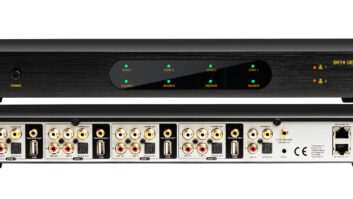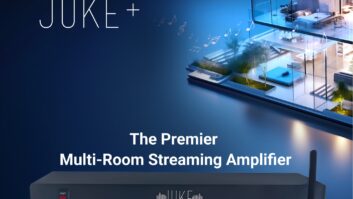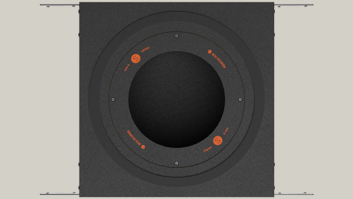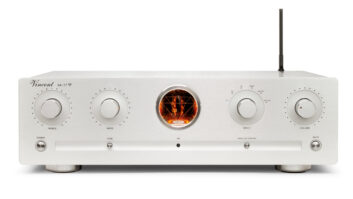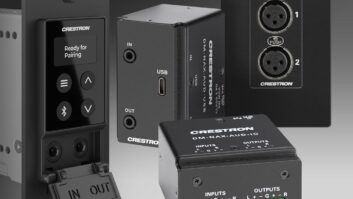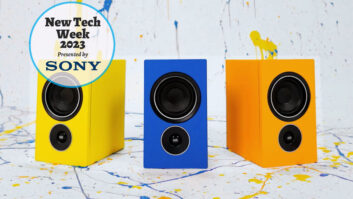Technology born in the computer industry has been sneaking its way into mainstream home entertainment gear for decades. PC-grade processors, hard drives and networking gear are now dominating the consumer electronics industry. This has spawned an array of new applications with unforeseen benefits to the residential systems integrator and end-user.
Recent data from Harbor Research predicts that the number of non-PC/non-phone devices to be networked for remote monitoring and e-services will exceed 500 million by 2010. That’s a $200 billion market opportunity. Granted, it includes such sensations as a printer that orders its own ink automatically and espresso machine with online diagnostics, but more interesting is the proliferation of network-intelligent devices within the home networking, home A/V and home automation realm. Home networks, also known as “residential structured wiring systems,” have been growing in popularity for about a decade. They were initially marketed as a way to “future proof” homes by running dual pairs of high-bandwidth CAT 5 twisted pair and RG-6 coaxial cables to all the TVs, equipment racks and PCs around the house back to a central “gateway” panel. If a room had a PC with a modem the CAT 5 would serve dial tone for AOL access.
Future-proof marketing was more than just a bluff. In the new millennium, applications for the home network are bursting on the scene at all levels of the market. These new components sit on the home network and communicate to other devices and services via the local subnet and access the Internet via broadband gateways such as the GE Smart ConnectionCenter.
This trend has created fertile ground for new device categories. Hard-disc recorders such as SONICblue’s Replay TV 4000 sport features that exploit the home network in new and exciting ways. Replay’s video sharing feature has gained notoriety–and lawsuits–for letting consumers swap programs with each other over the Internet. A particularly hot category of networked media devices are digital music servers. Similar to hard disk recorders for video, music servers allow thousands of hours of audio to be stored digitally on massive drives. Once on the drive, users can access songs instantly by artist, album or customized playlist. Most devices connect to the Internet, vis–vis CD recognition technologies such as Gracenote, for access to music information databases.
And it is not just a game for peripheral CE players. Industry heavyweights like ReQuest Multimedia, Escient, Lansonic, Pioneer, Compaq, JVC, Marantz, Onkyo, SONICblue and Kenwood are all incorporating hard disc media management in their current product offerings.
Besides which solution to use, one of most important issues facing the systems integrator, is how to exploit the home network for optimum performance and maximum customer satisfaction. In the industry lexicon, do you “stream” or do you “synch”?
Streaming Most hard drive music management products “stream” their content on a broadband network via a HomePNA home network, or can they use optional ethernet.
Many manufacturers and installers recommend streaming content because the content delivery process also offers continual system upgrades and music and information updates, which are all automated and instantaneous.
Escient’s new Physital product is the FireBall, a product that allows direct access to music stored on the hard drive and CDs, with Internet-based music-recognition services from Gracenote. It also streams Internet radio with updated station lists, software upgrades and enhanced entertainment services from OpenGlobe. All of these features are available immediately when a user connects to an ISP (via either dial up or broadband).
The FireBall also provides this capability without requiring a PC in the system, as it resides on an independently embedded platform. It identifies, burns, catalogs and manages both physical discs and digital files.
Multiple FireBall units can be connected together for up to five zones of distributed music with five independent Escient interfaces into the system. Connecting the units together also increases the user’s storage capacity exponentially. The FireBalls then become daisy-chained for contiguous streaming of their content to each other.
Streaming of audio and video over broadband IP home networking is a reliable manner in which to deliver original CD quality audio or DVD quality video digital bits to the remote TV or speaker. The natural resiliency of TCP/IP protocols allow for occasional data loss within a home network to be resent before it is needed by the remote player. “HomePNA’s 2.0 specification for phoneline networking provides 10Mb/s of bandwidth which can easily support more than 20 high quality MP3 streams or five original CD audio bit streams over a single pair of phone wire,” stated vice president of HomePNA, Tony Zuccarino. “Coupled with IP network protocols, phoneline streaming is a reliable transport for high fidelity audio.”
Synching
Some integrators and engineers contend that while streaming does provide a means of increasing capacity by being able to store additional media on other devices, that ultimately optimal audio–during “real time” streaming–is subject to the annoying skips, stalls, buffers and shut-downs that are still part of the Internet experience.
“The potential for failure is increased with low-bandwidth, unswitched networks such as HomePNA which use regular phone lines to network devices that also slow down the rest of the network or devices that use USB-to-ethernet converters,” stated vice president of sales for AudioReQuest Multimedia, Nick Carter. “Consumers, in these applications, are sacrificing quality for quantity. Try explaining that to a customer who is spending $50,000 or more for an audio system,” Carter explained.
Another contention is that the increased capacity offered by streaming can also compromise a server’s redundancy (its ability to allow simultaneous access to multiple channels or zones of audio). Devices in this category allow the user to have different music on each hard drive while allowing shared access to all the music by streaming from one unit to the other during playback. However, splitting data onto multiple hard drives creates another potential problem for your customer if the system doesn’t have reliable backup: recovering the system in the case of a hard drive failure.
NetSync, the proprietary technology behind Carter’s ReQuest Multimedia hard drive systems, provides an alternative to streaming. NetSync can automatically synchronize a listener’s entire collection both over a home network and over the Internet to a hard drive, which means digital music files are transferred one time only. Once the music is available on a hard drive, the network can go down and the phone lines can be out, but music files can still be played at full quality.
Networked multimedia is clearly the future and many integrators and dealers have already made the transition. Understanding the principles of streaming versus synching(and explaining the benefits of each(is crucial to maintaining customer satisfaction, and ultimately, your success.
Margot Douaihy is managing editor of Residential Systems.

